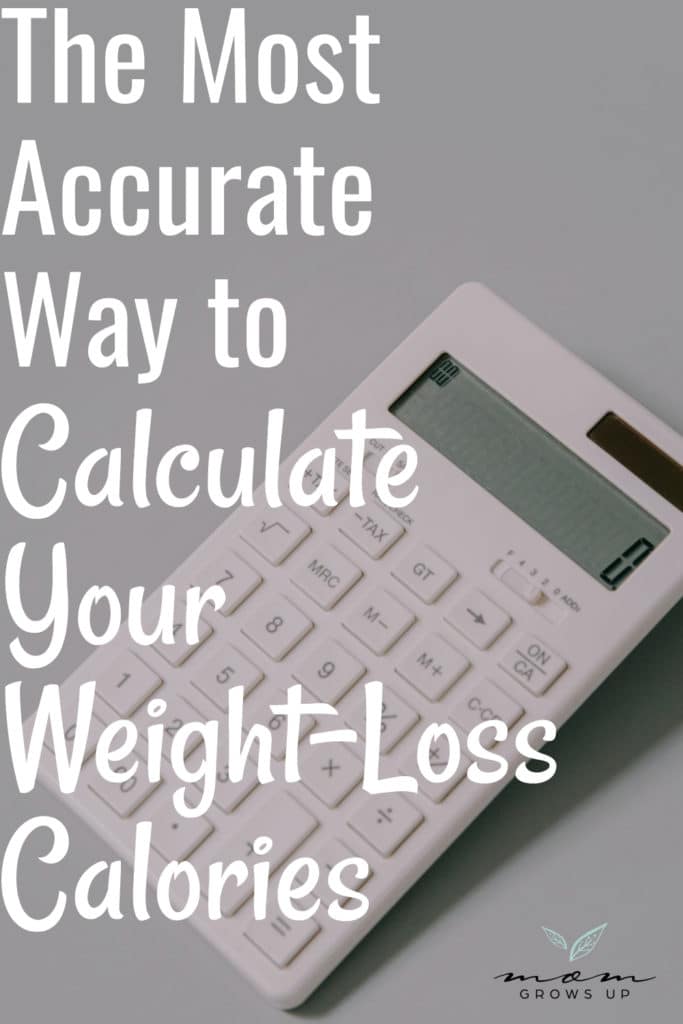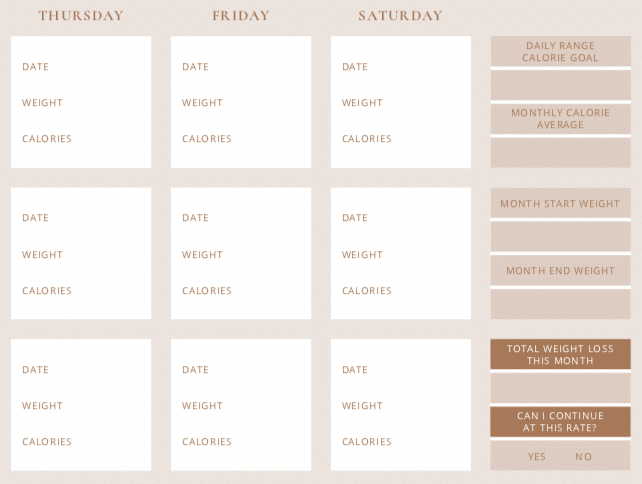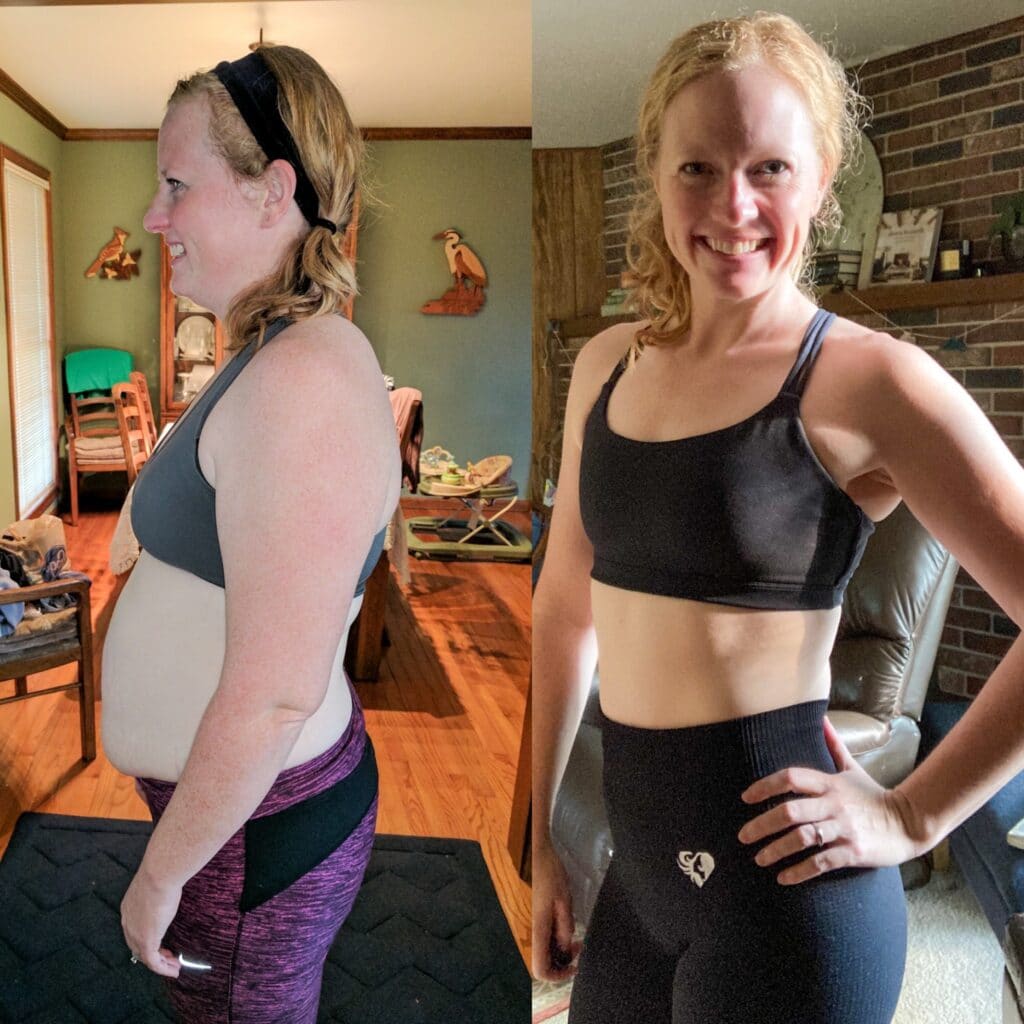The Most Accurate Way to Calculate Your Weight-Loss Calories

There are a lot of online calorie calculators out there. Many of them give similar results, while others will produce totally different calorie ranges from one to the next. It’s hard to know which one will calculate your weight loss calories accurately.
On top of that, the calculators rely on you to determine and specify your level of activity-both at work and in the gym. Depending on what activity levels and intensities you choose, you’ll get wildly different numbers spewing out of the calculator.
It is super overwhelming, and hard to know how many calories you need to eat in order to lose weight.
Related Post: Is It Possible to Lose Weight Without Counting Calories?
Figuring out how many calories you need to eat in order to lose weight is not simple. Mainly because these weight loss calorie calculators are straight up ridiculous. They are the very reason why I refused to track calories for an entire DECADE of my extensive weight loss career.
For example, check out this online calculator. It’s the top search result to pop up on Google.
According to this, to lose 2 lbs per week, I’d have to eat fewer than 1000 calories per day! For reference I am a 36 year old female who is 5’6″ and 150 pounds. Yet they’ve given me the calorie needs of a toddler.
Do me a favor and pass on those results, no matter how desperate you are to lose weight. Guys, I eat 1000 calories for breakfast some days yet I successfully lost 20 pound this past year (and kept it off). How did I do that? Not by eating under a thousand calories per day, I’ll tell you that much.
Instead, I started with a higher range a friend of mine calculated then I tracked, analyzed, reflected, and adjusted my calories to fit my lifestyle and get results.
Let me teach you how to do the same.
The Starting Point
There are two methods from which you can choose from when figuring out how many calories you need to eat per day to lose weight:
1. Ask a friend, or me, to calculate your calories based on this information:
- Your height
- Your weight
- What type of exercise you do (if any), and how often
- How many steps you generally take in a day
- Your occupation
- Your NEAT
This is the information I collect from everyone who joins Kids when I calculate their starting calories, and I’ve got a great track record going for weight loss.
Why have someone else calculate your calorie target for you? Because when you do it on your own, you will have a tendency to second guess your results. I know that because that’s what I used to do when I started my calorie counting journey. Then I’d never stick to it because I didn’t trust it.
But when someone else calculates it for you, you trust it. When you trust the number, you put all your effort into hitting it because you believe it will work. No questioning, no hesitation, no second guessing- and that’s when the magic starts happening. A good friend of mine calculated my calorie range (1800-2000) 20 pounds ago, and I never looked back. I stuck to it, and it worked.
Or
2. Find an online calorie calculator that isn’t nuts.
Here’s one that gives reasonable and accurate results. I tested it against the cold hard data I’ve collected over the course of my journey, and it came out shining. Check out my findings.
The key here is entering an honest activity level into the calculator. Don’t cheat yourself and plug in that you only workout 2 times a week when you actually work out 5. You aren’t gaining anything by doing this, you are actually setting yourself up for under-eating. Undereating can be just as detrimental to weight loss as overeating.
Under-eating leads to binging. Binging robs you of your weight loss. Your body needs sufficient calories to maintain your level of activity while feeling your best. Losing weight can be hard enough without feeling weak and irritable to boot. Please don’t under-eat.
Bottom line: don’t lie to the calculator. People do this all the time to their diet peril, don’t be that person. This is another great reason to have someone else calculate your calories. Especially if you’re a beginner.
*This post contains Amazon affiliate links and other affiliate links. I will receive a small percentage of the sale, at no additional cost to you, if you purchase through my link. Thanks for your support!
The Middle
This is the hardest, but most important, part. The middle will take one full month. Patience, young grasshopper. Here’s what you will do: Log everything you eat. The good, the bad, and the ugly. It’s time to buy a food scale cuz the logging is about to get serious.
Related Post: 13 Tips and Tricks for Longterm Food Logging Success
When I say everything, I mean every last crumb and drop that passes your lips. Everything will be entered into your food tracker. I don’t care if you’ve gone over your calorie limit. Log. it. all. Not having access to nutrition information is not an excuse. Estimate as best you can, and log it.
You must log it all, day in and day out, for a month straight.
This can be really hard to follow through with on your own. That’s why I created Mom’s kids. The accountability from this group will keep you logging when you want to quit. You must find a way to keep logging every morsel of food you eat, otherwise you will never have the most valuable weight loss data you could possibly get your hands on.
Yes, you will go over your calorie limit from time to time. You might even have a 4000-calorie day once in a while. I’ve personally eaten 8000 calories in a single day before (and logged it. Hahaha)! These are not reasons to give up. Keep trying, again and again, to eat within your calorie limit. It gets easier and easier, I promise.
Then, at the end of the month, the fun begins.
The end
The month is over. It’s time to spin all those calories you logged into weight loss gold. First, add them all up. Then divide that shockingly large number by how many days are in that month. This is your daily calorie average for the month.
This is the data that will propel you to victory. Take that info and figure up your “Monthly Calorie Average,” “Total Weight Loss This Month,” and ask yourself, “Can I continue at this rate?” Below is a picture of my free printable that will help you with this process each month.

Sign up for my email list to get the printable calendar you see there for free! Print one out every month and fill it in with your daily calorie intake at the end of each day. At the end of the month, getting your average will be a breeze with the help from this simple printable.
Sidenote: If you’re looking at weight loss and asking yourself how little you can eat and still survive, you’re doing it wrong. That is a sure fire way to get stuck in the yo-yo diet trap. This is about lasting, lifelong sustainable weight-loss. Ask yourself the opposite, “How much can I eat and still lose?” It’s way more fun that way. Haha!
To RecaP the Most accurate way to calculate your calories is…
- Start with the calories this online calculator gives you.
- Collect data about how much you are eating for a full month by logging your food.
- At the end of the month, do a little math and look at the numbers.
- Adjust your daily calorie goal based off of how you felt that month and what your results were. Repeat the whole process next month.
If you do this repeatedly, you will know exactly the amount of calories your body needs to not only lose, but maintain and gain also.
Related Post: I Food Food Freedom Logging Calories
Use your data from the month to lower or raise your calorie target based off if you want a faster or slower rate of weight loss. Or maybe you want to increase calories to maintenance range. It’s all possible once you have your calorie average for the month compared to your weight loss.
This is how to calculate your calories as accurately as possible. This is how lasting, lifelong weight loss is achieved.
I’ve been over here collecting data like a mad man for over a year now! When I experience weight loss stalls, slow downs, or plateaus, I don’t feel lost. I don’t get discouraged because I know why it’s happening.
Instead of being tempted to jump to a drastic “quick fix,” I know exactly where to adjust and tighten up my current, proven, winning strategy. And I move forward with confidence.
Why doesn’t everyone do this?
Most people aren’t inclined to go this route because it takes time. It’s not easy, per se, but it’s not hard either. You’re welcome to eat what you like, and no food is off-limits, so that’s fun. Plus, you’ll get results. Results breed confidence. Confidence is a beautiful thing. Having confidence in yourself and your weight loss method is magic.
I recommend pairing this calorie tracking method with this planner. Finding your ideal calorie range is just one, big, fat, crucial piece of the complicated weight loss puzzle. But there is more to it than that. You also need to plan how you’ll make your weight loss goals a reality – aka what you will eat to hit your calorie goal and not starve.
The planner will help you think about your choices and how they make you feel. There is space to jot down the challenges you faced that day with eating and reflect. You can also organize your weekly grocery lists and menus, plus schedule and prioritize your workouts all in one convenient place.
This approach to weight loss changed my life
Tracking and analyzing my calorie intake vs my weight loss has been the most game changing information of my 20 year weight loss journey. It is pure freedom knowing precisely how much I can eat to still lose weight.
By doing these things consistently I have managed to lose and, better yet, MAINTAIN my weight over the last covid crazy year. If you feel stuck – give it a try.
If you have any questions, don’t hesitate to reach out. Follow me on Instagram to learn more about my weight loss journey, and be sure to pin this to Pinterest for reference later!
P.s. Here’s a 1-week free trial of Kids to help you get started. When you join, I will happily figure out your starting calorie range for you.

Other posts you might be interested in:
3 Simple Tips to Lose Weight
Live Free Life and Fitness Planner
I Increased My Calories and Here’s What Happened
Why I Weight Everyday and Why Maybe You Should Too
7 Tips for Weight Loss Success






